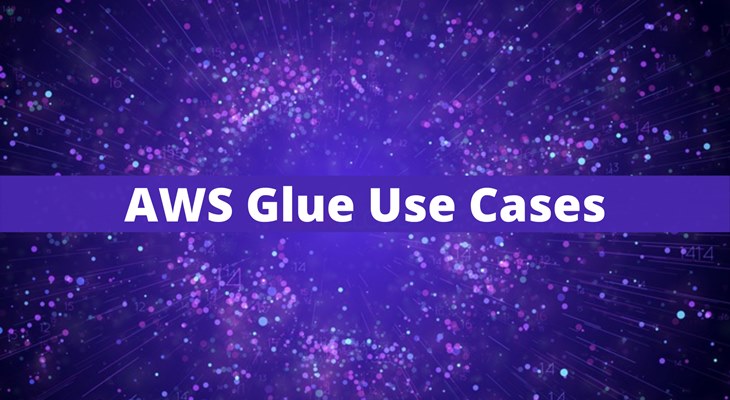Cloud computing gave rise to too many acronyms, but none of them are more critical than IaaS & PaaS the structure masses of modern cloud computing.
Structuring out a contemporary estate needs certain vital decisions to be made. Ones that influence internal requirements, commercial needs, and competitive benefits.
Although there are guides available that also relates to the importance of SaaS, but we ruminate that this combat deserves it's planetary. Hence, this guide aspect to compare Iaas & PaaS from the many outlooks - including roadmaps, features, and much more.
For the uninitiated, these are infrastructure-as-a-service (IaaS), platform-as-a-service (PaaS) and software-as-a-service (SaaS). Here we break down all three for you, including examples of the companies that have come to dominate each category.
Before proceeding the comparison let’s get through a brief description of IaaS, PaaS services:
- IaaS (Infrastructure as a service) is a form of cloud computing that offers virtualized computing resources above the internet. In short, IaaS gives operators automated and ascendable settings with great flexibility.At the lesser end of the managed cloud services range, IaaS providers arrange and accomplish pre-configured and virtualized hardware and allow users to turn up the virtual machines or computing powers lacking the labor-intensive server supervision or hardware funding.For example, Amazon Web Services renders IaaS through the Elastic Compute Cloud or EC2. Maximum IaaS packages enclose the storage, networking, servers, and virtualization components, whereas IaaS customers are commonly accountable for installing and sustaining the operating systems, applications, databases, and security modules.
- PaaS (Platform as a service) is a cloud computing configuration in which a third-party provider provides hardware and software tools, generally those required for application development to the users above the internet.Swiftly increasing in popularity, PaaS solutions suits to developers who want to invest extra time coding, testing, and deploying their applications as an alternative of dealing with hardware-oriented tasks such as handling security patches and operating system updates.Google Cloud Platform offers another PaaS selection in App Engine.Furthermore, to the managed arrangement, PaaS products comprise APIs and tools that allow developers to catch in features such as monitoring, version control systems, and traffic splitting.
So, let's get started with the matter of Platform as a Service [PaaS] vs. Infrastructure as a Service [IaaS].
Speedy Scale:-
When we look at the evaluation of IaaS vs. PaaS in the deliberation of scale, the results are real. In the finance sector, we are seeing challenger banks who have Greenfield spots when it comes to infrastructure.
Whereby, through starting afresh, they don’t have the same transitional issues associated with heritage officialdoms.
Sometimes, this permits them to escalate outside the larger, grownup businesses, which are enforced to alter what they currently have.
This ability means that they have better skills at the same time having the equivalent opportunity to ascendable infrastructure.
For example, if you look at the mammoth that is Airbnb, they only commenced with four developers, all of which could be concentrated on building the correct solutions, not the middleware.
As such, with PaaS, you can easily changeover from a thousand kilobytes to petabyte-scale, rather than IaaS, although you are restricted to the extent of the environment that you have built.
This scale is hitched with the expediency of PAYG pricing which is provided by Azure, Google, and AWS. Which, through keeping costs economical, you can scale up and down as you replace technology, releasing up the inclination to innovate.
Application Development and Management Package:-
PaaS communicates an end-to-end application development and management set for businesses however IaaS is not that progressive in its assessment.
So, in the case of IaaS, one needs to accumulate the different components of network and storage, compute to make it work as the essential system for development.
Business Situation:-
Moving on from the subject of the various execution-related matters, it’s now imperative to discuss PaaS vs. IaaS from a business-driven viewpoint.
Primarily, as noted earlier, you must instigate with appropriate foundational levels, so that when enterprises do gauge out, they're in suitable shape to do so.
Only then can you project around the business necessity. Tactlessly, a lot of companies are restricted. In spite of having a service/ database, they then must advance from a bottom-up approach.
Whereby, most businesses are well-informed of their model and pertinent market shifts. The trouble they have is assimilating their business needs with the technical infrastructure they've got.
Performance:-
Day-by-day, you're implausible to see significant alteration between Iaas & PaaS for a typical application at runtime.
That supposed, as PaaS is further missing from the 'tin', in much the same way as relating physical and virtualized hardware, you're going to see some loss.
The noisy-neighbor difficulties, where other workloads on the same public PaaS provider can harmfully disturb your application's performance, establishes itself in much the same method as they do on public IaaS providers.
But on IaaS you have the choice to use higher instance types, which commonly means you end up with devoted admittance to an original physical machine, parting you no neighbors to struggle with.
Cost:-
This obviously hinges very much on the precise selections you make on a provider.
As clienteles of Cloud Foundry, we've found the price to be approximately under control with what we'd assume to pay to run a related amount of applications direct on AWS.
What we see frequently is that the comfort of turning up applications, you often unintentionally finish up using more resources than you might or; certainly without good control to clean up after yourself.
The additional issue to stand in mind is how thoroughly IaaS costs are able to reflect your workload. By its actual nature, there are some incremental hedges between instance dimensions that may not closely match your needs, meaning that you might be taking excess capacity that you don't need.
PaaS, on the other hand, permits you to provide and pay for exactly the resources that you need to track your application workload. There are many deliberations about the costs of further platforms, mainly Heroku, where the values can very speedily become uncompetitive with IaaS.
IaaS or PaaS?
By some strict crumple, we have established that IaaS is sturdier in some areas and PaaS in others, which is the reality of the situation.
We'd have to mention that for actual task critical workloads, PaaS is quietly unformed with too many moving parts to be measured as a feasible alternative.
We assume that, over the period, as PaaS offerings develop more engaged cynical, permanence and operational transparency will increase.
Where you're able to digest a sophisticated level of risk, PaaS can deal noteworthy suppleness in your capability to introduce and handle innovative applications.
Even if you're underneath a decent configuration organization within your IaaS taskforce, PaaS is expected to bring you a runtime environment in an element of the time.
For organizations with mysterious procurement cycles and labor-intensive configuration, the dive onward is practically vast.
For organizations that are accepting a microservice or SOA-type approach, PaaS offers mainly free offering, with the easiness in which you can turn up the runtime environments for innovative services.
Recommended For You -
Predictive Analytics v/s. Machine Learning
Walmart tie-up with Microsoft on cloud technology | Microsoft AI





